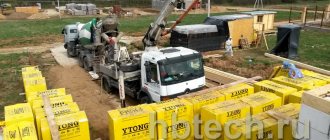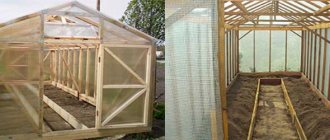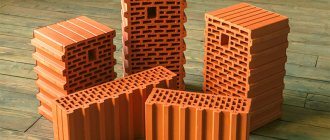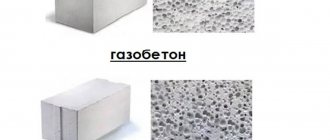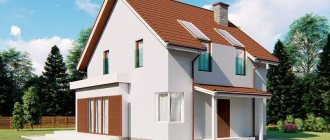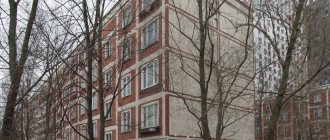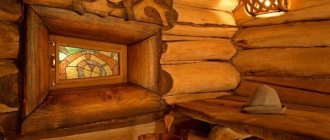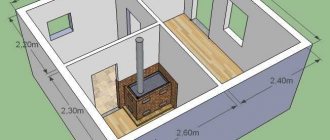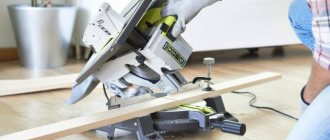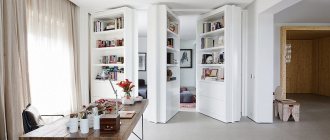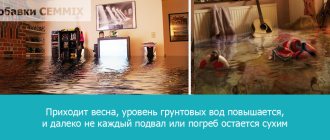In our country, they began to actively build from aerated blocks in the 1950s. In the mid-2000s, technology experienced its rebirth. Since then, gas block has become one of the most popular masonry materials, second in popularity only to brick and foam block. The advantages of aerated concrete blocks are obvious - large format (faster and easier masonry), flat surface (cheaper external and internal finishing), excellent thermal insulation properties (saving on heating) and ease of installation (saving on builders).
There is also nothing complicated in the production of aerated blocks: you need water, lime, cement, quartz sand and a suspension of aluminum powder. The powder reacts with lime, releasing a large amount of gas. This is how air pores (bubbles) appear in the cement-sand mixture, which occupy about 85% of the volume of the block. Swelling and setting of the solution occurs in special vibrating containers. After waiting for the pre-hardening stage, irregularities are removed from the surface of the aerated concrete, and the remaining mass is cut into blocks of equal size. The resulting workpieces undergo high-temperature steam treatment in an autoclave, after which they are calibrated using milling equipment. If previously only large enterprises could produce gas blocks, now for relatively little money, from 300 to 500 thousand rubles. Anyone can buy a small line for making aerated concrete in artisanal conditions.
Due to the availability of technology, factories and small companies producing autoclaved cellular concrete (which is what aerated concrete is made of) have spread throughout the country. The supply of aerated concrete has increased, prices have fallen. Compared to the mid-2000s, gas blocks have become considerably cheaper. However, there are always companies that want to earn more money for the same product. The Xella company, which produces YTONG® aerated concrete blocks, is just such a case.
there is nothing reprehensible in trying to sell your products at a higher price , this is how the world works. Hundai sells its cars for hundreds of thousands of rubles, and Rolls-Royse for tens of millions, but we understand perfectly well what causes the difference. In the case of aerated blocks, wall building materials made from ordinary water, lime, sand and cement, everything is not so simple.
Here is a table to compare the prices of YTONG® blocks with the prices of other popular brands of blocks. The difference in price per cubic meter is almost 20%.
| Manufacturer | YTONG® | INSI | Teplit | Porablock | Revit |
| Economy segment | |||||
| Block brand | Economy D500/300 | Wall block | Twinblock TB 300-5 | Aerated concrete block | BP-300 D500 |
| Dimensions | 625-300-250 | 625-300-250 | 625-300-250 | 625-300-250 | 625-300-250 |
| Density | 500 | 500 | 500 | 500 | 500 |
| Strength class | 3,5 | 3,5 | 2,5-3,5 | Well | 2,5 |
| Price, ₽/cub. m | 4600 | 3600 | 3600 | 3300 | 3600 |
| Middle segment | |||||
| Block brand | Standard D500/375 | Wall block | TB 400-5 | Aerated concrete block | BP-400 D500 |
| Dimensions | 625-375-250 | 625-400-250 | 625-400-250 | 625-400-250 | 625-400-250 |
| Density | 500 | 500 | 500 | 500 | 500 |
| Strength class | 3,5 | 3,5 | 2,5-3,5 | Well | 2,5 |
| Price, ₽/cub. m | 4600 | 3600 | 3600 | 3300 | 3600 |
| Premium segment | |||||
| Block brand | Hard D600/250 | Wall block | TB 300-6 | Aerated concrete block | BP-300 D600 |
| Dimensions | 625-250-250 | 625-250-250 | 625-300-250 | 625-300-250 | 625-300-250 |
| Density | 600 | 600 | 600 | 600 | 600 |
| Strength class | 5 | 3,5 | 3,5-5,0 | Well | 2,5 |
| Price, ₽/cub. m | 4900 | 3650 | 3800 | 3400 | 3700 |
Considering that more than one or two cubes will go into a house, we assessed the scale of the overpayment for a batch of gas blocks for the construction of such a compact house with an area of 76 square meters. m.
Project of a one-story house made of gas blocks. Area 76 sq. m
The perimeter of the house is 43.32 m, the height of the walls in the corners is 3 m, the masonry area is 129.96 m, the masonry is half a block. To build walls (excluding windows and doors for ease of calculation), you will need 760 blocks, which will be 44.53 cubic meters. m. We will “buy” blocks of the middle price segment.
| Cost of blocks for building a house | ||||
| YTONG® blocks | INSI | Teplit | Porablock | Revit |
| 204838₽ | 160308₽ | 160308₽ | 146949₽ | 160308₽ |
As you can see, the difference is very, very noticeable. And quite rightly, two questions arise:
What do YTONG® blocks have that blocks from other manufacturers don’t? What is the reason for the almost 20% difference in cost?
To answer these questions, we carefully studied the website of the Russian representative office of the manufacturer of YTONG® blocks, comparing the declared characteristics and advantages with data on aerated concrete of other brands.
YTONG® – blocks with 80 years of history
The first thing that interested us was the company's experience. The engineers of the company, then not Xella, but Ytong, launched the industrial production of aerated concrete in 1929! In the first year of operation alone, 14,000 cubic meters were produced. m of aerated concrete (gas silicate). This number of blocks would be enough to build 300 country houses - that is, several fairly large cottage villages. The real heyday of Ytong block production occurred in the first post-war decades and the 1960s, during the so-called period of the German economic miracle. In 1952, Ytong blocks were called for use at the government level. In 2008, Ytong gas blocks began to be produced in Russia at a specially built plant in Mozhaisk. Design production capacity – 1,100 cubic meters. m per day. According to company representatives, the plant is the most modern in Russia. Changes have been made to the concrete recipe and the operation of production lines to allow the production of blocks adapted for our climatic conditions (details are not specified).
In terms of plant operating time and production volume, Ytong is approximately in the middle among its competitors.
| Manufacturer | Teplit | INSI | Ytong | Porablock | Revit |
| Launch of production in Russia | 2005 | 2008 | 2008 | 2012 | 2009 |
| Design capacity, cubic meters m/year | 500 | 420 | 400 | 345 | 300 |
All of the listed manufacturers produce gas blocks using German equipment. Thus, in the public history of the YTONG brand, we did not find anything that could justify the higher cost of YTONG blocks. Perhaps it's all about consumer characteristics.
YTONG blocks - GOST - not a guideline!
After the loud headline, you need to give an explanation. The Xella company states that YTONG gas blocks are produced according to the organization’s standard (STO 73045594-001-2008 - ZAO Ksella-Aeroblock-Center Mozhaisk), which imposes higher requirements on finished blocks than state standards (GOST 31359-2007 and GOST 31360 -2007), which all manufacturers are required to adhere to. We were unable to obtain a copy of the STO for YTONG units, so we cannot confirm or deny the company’s statement. Very often, releasing your own standards is just a publicity stunt. In a service station, you can overestimate some unimportant indicators or overestimate important ones by only a tenth of a percent. And this will give the company the right to loudly declare technical characteristics that exceed all standards.
For an unbiased analysis of the characteristics, let us turn to the test reports of YTONG blocks, which are easy to find on the Internet. Let's compare the values stated in the protocols with data on other gas blocks.
| Physical and technical properties | Unit measurements | YTONG | INSI | Teplit | Porablock | Revit | ||||||||||
| Brand by density | kg/cu.m. m | D400 | D500 | D600 | D400 | D500 | D600 | D400 | D500 | D600 | D400 | D500 | D600 | D400 | D500 | D600 |
| Concrete strength class | – | B2.5 | B3.5 | B5.0 | B2.0 | V 3.5 | B3.5 | B2.5 | B2.5-B3.5 | B3.5-B 5.0 | – | B2.5 | B3.5 | – | B2.5 | B3.5 |
| Dry thermal conductivity coefficient. condition | W/m °C | 0,088 | 0,099 | 0,112 | 0,1 | 0,12 | 0,14 | 0,1 | 0,12 | 0,15 | – | 0,12 | 0,14 | – | 0,13 | 0,143 |
| Frost resistance | cycle | F100 | F100 | F100 | F100 | F100 | F100 | F100 | F100 | F100 | – | F150 | F150 | – | F50 | F50 |
| Fire resistance | hour | NG | NG | NG | NG | NG | NG | NG | NG | NG | – | NG | NG | – | NG | NG |
| Vapor permeability | mg/m hPa | 0,24 | 0,21 | 0,17 | 0,2 | 0,2 | 0,16 | 0,24 | 0,21 | 0,18 | – | 0,2 | 0,16 | – | 0,20 | 0,16 |
| Shrinkage deformation during drying | Mmm | 0,45 | 0,4 | 0,35 | n/a | n/a | n/a | 0,56 | 0,56 | 0,59 | – | 0,56 | 0,56 | – | 0,56 | 0,59 |
| Deviation of geometric dimensions | – | – | ||||||||||||||
| - by lenght | mm | 0,3 | 0,3 | 0,7 | 2 | 1-2 | – | 0,3-0,8 | – | 3 | ||||||
| – by thickness | mm | 0,3 | 0,4 | 0,5 | 2 | – | – | 2 | ||||||||
| – in height | mm | 0,7 | 0,8 | 0,3 | 1 | – | – | 1 | ||||||||
As you can see, there are few differences. Let's look at what you can overpay for.
YTONG blocks – super strong
First of all, the difference in strength class is striking. Only YTONG and INSI brand D500 blocks have a strength class of B3.5. All other manufacturers under consideration guarantee only B2.5. Let us remember that the strength class shows us the maximum ability of a material to withstand compressive loads - that is, what is the maximum weight laid on top that the material can withstand. In suburban construction, unless, of course, you are building a house higher than three floors, with a helipad on the roof, there are no such large loads, and therefore strength class B3.5 is an excessive value.
YTONG blocks are the first among even ones
The accuracy of geometric dimensions is something that the YTONG block manufacturer can be truly proud of. In all measurements - length, thickness and height, the deviation from the declared values does not exceed a millimeter. This is confirmed by test reports and is worthy of praise. Among competitors, only the Kurgan plant, which produces Porablok blocks, stated similar characteristics, but we were unable to find an official confirming document.
Now let’s try to understand whether it’s worth overpaying for ideal geometry. Thanks to precision, the blocks fit more tightly to each other in the masonry, which guarantees higher thermal insulation properties of the wall and its even surface. What are the blocks attached to? Using special glue or cement-sand mortar, however, the latter is not the best option. Manufacturers recommend maintaining a seam thickness of 2-3 mm when laying with glue and 10-15 mm when laying with mortar. As you can see, the dimensions of the seams easily compensate for minor, 1-2 mm, deviations in the geometry of the blocks. Of course, the more ideal the material, the more incompetent the mason can be, but you won’t specifically call such a person. And from the outside and from the inside the wall will still not remain bare. Insulation (if necessary), cladding and plaster will “forgive” even slightly larger unevenness.
Comparing other characteristics, one also does not see any serious discrepancies. Yes, YTONG blocks have a lower thermal conductivity coefficient and a higher vapor permeability coefficient. But the difference with other blocks is at the level of tenths and hundredths, and all this will probably be leveled out by other components of the wall pie.
The bottom line is that blocks from Russian manufacturers do not have critical deficiencies compared to YTONG blocks; all comply with GOST requirements, which are not much different from the requirements of Xella service stations.
Production technology
Bonolit aerated concrete has a porous structure with evenly distributed pores with a diameter of 0.5 to 3 mm. It consists of quartz sand, cement, gypsum, lime and water. All ingredients of the material are mixed using an industrial mixer, and then subjected to heat treatment under high pressure in an autoclave. Due to this, the material acquires a uniform structure and strength even at the edges.
Ytong technology involves mixing sand, lime, cement, water and aluminum paste. The prepared composition hardens, after which it is cut into structural elements using thin strings and dried in autoclaves for 12 hours. The result is a high-strength material with excellent heat capacity, vapor permeability and hygroscopicity.
Maybe it's all about the environment?
Last but not least, the parameter of YTONG blocks is environmental safety. YTONG blocks are awarded the Ecomaterial Absolute certificate, confirming that the products have passed voluntary certification. From the explanations of the organization that issued the certificate, it follows that “the product meets the standards, the release of harmful substances and toxicity is at least 40% below the maximum permissible concentration, and the production of products uses advanced technologies and equipment that minimizes the impact on the environment,” i.e. . The certificate is partly issued in recognition of the environmental safety of the product, and partly for the safety of the production processes through which the product was produced.
Among the blocks we are considering, only YTONG and Porevit products have an Ecomaterial project certificate. Porevit blocks are assigned the rating value Ecomaterial Green (the material is safe for humans and the environment), which is lower than Ecomaterial Absolute (environmentally friendly material). Teplit blocks have a certificate of conformity of manufactured materials and products to the category of environmentally friendly “green” building materials from the Union of Construction Industry Enterprises of the Sverdlovsk Region.
Since each certification company is guided by its own standards and criteria, for a more adequate comparison of the blocks under consideration, we will compare them in terms of the specific effective activity of natural radionuclides (NER) or natural radiation. Since the level of natural radiation can negatively affect human health, sanitary and epidemiological surveillance services very carefully determine it for all construction products entering the market.
| Norm | YTONG | INSI | Teplit | Porablock | Revit |
| NRN activity indicator, Bq/kg | 370 | 199,3 | 106 | 77,5 | 39,77 |
s/n – corresponds to the norm, the exact value is not indicated.
In the battle for the environment, YTONG blocks have perhaps the worst indicators in terms of natural radiation. However, they are still much safer than the standards require, and therefore can be used to build walls even in children's institutions.
Myth - Itong aerated concrete blocks are the best blocks on the market
“Itong – blocks of the highest category” - such advertising slogans and headlines are replete with the Internet. But let's look at this with a sober look. I worked as a distributor for Itong for almost 2 years, and my total experience in this field is more than 10 years, so I know what I’m writing about.
So, a little history of the Itong plant in Mozhaisk. In 2006, a German-Russian joint venture was created, where the Russian side provided space and premises for a plant for the production of aerated concrete blocks, and the German side provided technology and equipment.
In the first planned year, it was not possible to launch the plant due to the collapse of the roof of the workshop on the equipment... after all, in Russia everywhere and always they try to save money momentarily, without assessing these “savings” in the future. Another piece of information unknown to the general public is the fact that the Germans took to Russia not a new, but a “used” plant from Germany. Moreover, the production line is exactly the same as in Lipetsk (LZID and NLMK), only they were new there.
At first, while production control was carried out by German specialists, the quality of the blocks was quite decent. But to achieve such quality, the Germans used imported Finnish and Estonian lime with very high characteristics. And although there were already problems with the accuracy of geometric dimensions, the strength characteristics of the blocks were higher than those of other manufacturers. In the first year of launch, huge amounts of money were invested in PR of the plant and its products in the media. That’s when the myth about the “exceptional quality” of Itong aerated concrete blocks was born. Some time after the launch, it became clear that it was expensive to maintain qualified specialists from Germany and they were sent home, and lime began to be transported from Kaluga, but its quality was no longer the same as that of the imported one... Although the GRAS-Kaluga plant operates on the same lime , and the quality of its blocks is not inferior to Mozhaisk Itong. I recommend reading a review of the work of the Itong plant in Mozhaisk, written by one of its employees, so to speak, to look at the plant from the inside - https://orabote.net/feedback/show/id/6270. No comments, everyone will draw their own conclusions.
Regarding pricing for the products of the Itong plant in Mozhaisk, we can say the following - several years ago, while talking with the head of Itong-Russia (a German, I will not name names), I received the following answer: “Itong is a brand that already has a long history, so even in Europe the products are under The Ytong brand is sold at prices 30-35% higher than similar products from other manufacturers.” Well, not all buyers of Itong blocks (meaning individuals) realize that by buying Itong blocks at a price of 4000-4500 rubles/m3, they are thereby sponsoring large construction projects, to which the same blocks are supplied at a price of less than 3000 rubles/m3. m3. I won’t talk about the “promotion” of Itong blocks in design organizations (so that the design states “wall material – Itong aerated concrete blocks”)...
Probably, this article would be more suitable for the “Consumer” magazine and its goal is not to discredit the Itong plant, I just want to avoid fooling the average consumer who rushes around the Internet in search of material for building their home.
Itong blocks are good blocks, but they are par with blocks from other manufacturers who use modern imported lines for production, but not superior to them. And in this case, as the hero from one famous advertisement for washing powder said, “why pay extra?”
In any case, the choice remains with the end consumer! Let your home make you happy!
conclusions
Of course, we do not want and will not encourage you to buy or not buy certain blocks. YTONG blocks attracted our attention due to a noticeable advertising campaign on the Internet and a significant difference in price compared to aerated concrete from other manufacturers. And if something is expensive, you always want to know why. This is exactly what we tried to do, delving into the history of the company, technical characteristics of products and pretentious environmental certificates. And nowhere have we found a single truly compelling argument to answer the main question of the article – is it worth overpaying as much as 20% when choosing YTONG blocks?
When preparing the article, information was used from the websites of manufacturers of aerated concrete blocks: porablok.ru, porevit.ru, gazo-beton.ru, teplit.ru, ytong.ru, xella.com.
